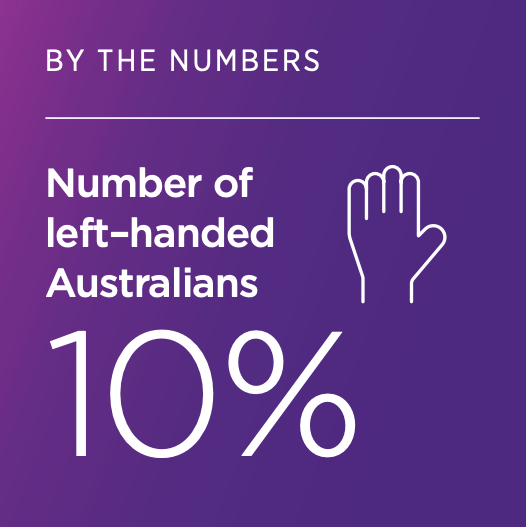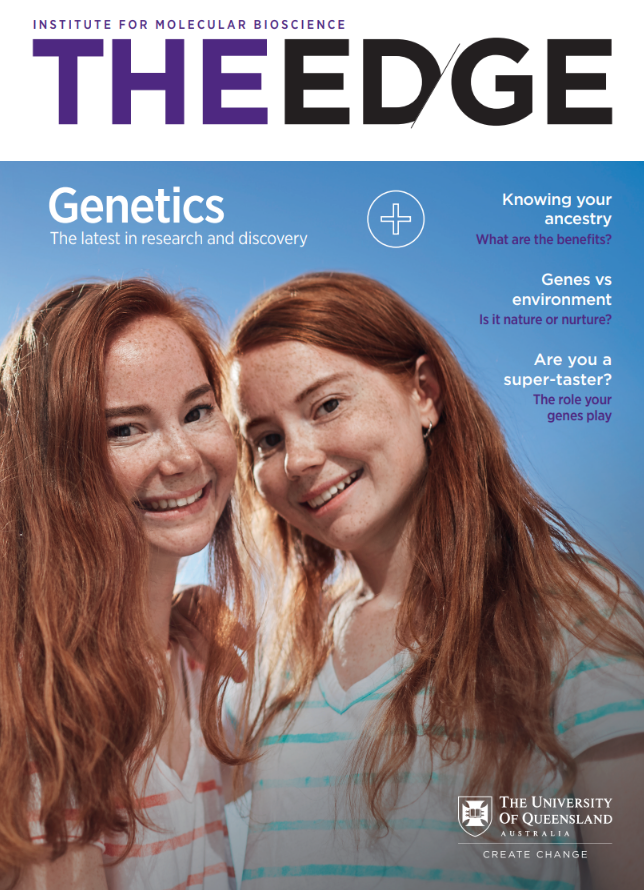Are you a leftie or a rightie?
‘Handedness’ is the preferential use of one hand over the other. You don’t need to be a scientist to know that preferring your left hand is much less common, but did you know that rates of left–handedness vary round the world from 3 to 12 per cent?
Rates tend to be higher in more permissive societies, and lower in more formal societies and those where people traditionally eat with the right hand and clean themselves with the left hand. Rates of left–handedness have also changed over time, as the stigma of using the left hand abates.

The least inherited of any trait
Hand preference is first observed in the womb as embryos begin to show single arm movements so it’s surprising that it is actually one of the least inherited of any trait. The ratio of the influence of genetic factors to environmental factors varies from trait to trait – in handedness, genetics only has a 25 per cent influence on variation.
Professor David Evans is IMB’s expert on handedness and explained why researchers are so interested in a seemingly superficial trait.

Learning about the brain
“There’s a lot we can learn from studying handedness because it is correlated with what’s going on in the brain – for example, if you are right–handed, you are more likely to have lateralised brain function – that’s function on one side of the brain, such as language centres.
“If you’re left–handed, you are more likely to have less lateralisation so may have language centres in both hemispheres of the brain. This doesn’t mean left–handed people are more skilled with language.
“If we’ve got a good understanding of laterality in the brain then that helps equip us to develop treatments for stroke, epilepsy, or trauma where you’ve got damage to a particular part of the brain.”

Genes influencing handedness
Researchers also study handedness to better understand the causes and consequences of left–handedness on risk of disease and other traits.
In a 2020 study, Professor Evans and his team identified 48 genetic variants with strong links to handedness.
“We found that 41 of these genetic variants influenced left–handedness and seven were associated with ambidexterity, which occurs when a person is equally proficient with each hand.

“Nobody knows what causes handedness, so if we can find genes that are somehow involved in determining if someone is left– or right–handed, that gives us clues to the underlying biology.”
Some of the genes they found play a role in the development of brain cells and the flexibility of the brain to adapt to change, which could explain the ability for people to teach themselves to write and perform other activities with their non–preferred hand.
Maybe it’s time to try that left–handed bowling, because in the case of handedness, genetics is only part of the story.

